“Sometimes I get to places when God’s ready to have somebody click the shutter.”
This is how the late Ansel Adams explained the seeming perfection of his photographs, seen by more people throughout the world than any other photographer. His black-and-white images of Yosemite National Park, the Grand Tetons, Monument Valley and other spectacular Western landscapes adorn many a home in the form of calendars, prints and coffee-table books, and every photography enthusiast learns about the man who made photography an art.
Adams’ explanation may give credit to luck, but in reality, each of his finished prints was a studied effort to achieve an artistic result.
Concert pianist-turned-photographer Ansel Easton Adams was born Feb. 20, 1902, in San Francisco, the only child of Olive Bray and Charles Hitchcock Adams. A curious and gifted child, Adams taught himself to play the piano at age 12 and would initially pursue a career as a concert pianist. Unable to stand the regimented structure of school, Adams began working with a private tutor at 13.
The next year, 1916, he persuaded his parents to take a vacation in Yosemite National Park. That event was a turning point in Adams’ life. From that first visit to Yosemite until his death, Adams maintained a love affair with the land and became an advocate for the environment.
The Yosemite visit also was the beginning of Adams’ involvement with photography. Armed with his father’s Kodak Brownie box camera and with one of the country’s most beautiful landscapes before him, young Adams began taking photographs. And he never stopped.
Taking photographs quickly became more than a hobby. For the next several years, Adams began to articulate his ideas about the creative potentials of photography. In 1927, he created what he called his first print using “visualization,” in which he determined the qualities of the final print even before he snapped the shutter. His first one-man exhibition was in 1928, the same year he married Virginia Best in Yosemite. All the while, however, he worked toward a career as a pianist.
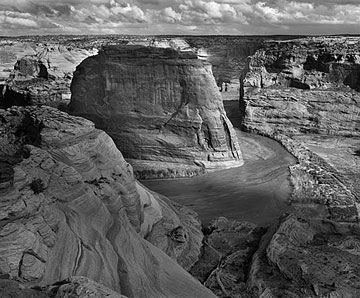
Fate was to step in, however, in the guise of an already famous photographer, Paul Strand. Adams met Strand in 1930 in Taos, N.M. In the presence of Strand’s dedication to creative photography, Adams decided to commit himself to a full-time career in photography and began accepting commercial assignments.
He opened a studio in San Francisco and, in only two years, became a founding member of one of the most important groups of photographers ever assembled. Group f/64 was made of up Edward Weston, Imogen Cunningham, Henry Swift, Sonya Noskowiak, John Paul Edwards, Willard Van Dyke and Adams, who joined forces to promote what they called “straight” or “pure” photography. (The group’s name refers to the smallest aperture setting on camera lenses, one that gives great depth of field and maximum sharpness.)
Even though Group f/64 met only a few times and had only three exhibitions, it affected a turning point in the history of photography, proclaiming that photography was a new American fine art form.
The artistic nature of his photographs, his experiments behind the camera and in the darkroom, and his recognition by such powerful photographers as Alfred Stieglitz won Adams many friends and admirers. Stieglitz, in fact, was so impressed that he gave Adams an exhibition in 1936, the first exhibition this photographic giant had given to a photographer since Strand in 1917.
Having maintained a constant involvement with the Sierra Club, Adams was elected to its board of directors in 1934. He spoke eloquently and often to Congress and, over his lifetime, met with four presidents to discuss his country’s lack of concern for the land and its resources.
With the nation’s involvement in World War II in the 1940s, Adams’ photographs became, according to biographer James Alinder, “expansive and heroic. Though he could not serve on active duty, he desperately wanted to be part of the war effort. He was able to find minor roles, such as teaching photography to army officers, but his most important contribution was in show America something of what it was fighting for,” wrote Alinder in Ansel Adams: Classic Images. This was the period of “epic vistas, photographs that captured the glory of the country.”
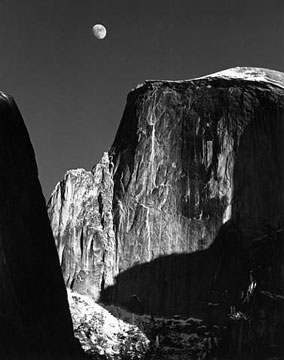
Ansel Adams – The Productive years
These were the most productive years of Adams’ career.
“His photographic style attained full development, and he made many of his classic images,” Alinder wrote. “His activities in support of photography as an art form also expanded. He increased his teaching and published accounts of the technique he codified, the Zone System. He also established academic departments for teaching photography and organized photography exhibitions.”
He received fellowships to photograph national treasures and, in 1953, did a Life magazine photo-essay with Dorothea Lange on the Mormons in Utah.
In 1962, he and his wife built a home with an extensive darkroom overlooking the Pacific Ocean in California. Over the next 20 years, Adams produced most of the finest and now-famous prints of his career.
He finally stopped taking orders for prints at the end of 1975, but the 3,000 last-minute orders that came in took Adams three years to complete.
By 1979, Adams prints accounted for half of the total dollar value of photography sales in the United States. This humble, easy-going man was the subject of a Time magazine cover story, the only photographer ever to make the cover. He was awarded the Presidential Medal of Freedom, the nation’s highest civilian honor, by President Jimmy Carter and received the first Ansel Adams Award for Conservation ever given by The Wilderness Society.
Adams celebrated his 80th birthday in 1982 amid 200 guests at a dinner sponsored by The Friends of Photography, during which he was presented with the Decoration of Commander in the Order of the Arts and Letters, the highest cultural award given by the French government to a foreigner.
Adams died of heart failure in 1984. In a fitting tribute exactly one year later, an 11,760-foot peak in Yosemite was named Mount Ansel Adams. The exhibition Ansel Adams: Classic Images drew 6,000 viewers a day at the National Gallery of Art in Washington, D.C.
Ansel Adams timeline:
1902 – born Ansel Easton Adams on Feb. 20 in San Francisco.
1916 – takes a family vacation to Yosemite and takes his first photographs, with a Kodak Brownie box camera.
1922 – publishes his first article, in the Sierra Club Bulletin.
1925 – decides to become a concert pianist.
1927 – makes the photograph Monolith, the Face of Half Dome, his first “visualization.”
1928 – married Virginia Best.
1934 – elected to the board of directors of the Sierra Club.
1946 – receives John Solomon Guggenheim Memorial Foundation Fellowship to photograph the National Parks and Monuments. Founds Department of Photography at the California School of Fine Arts in San Francisco, later renamed the San Francisco Art Institute. The Fellowship was renewed in 1948, and he received a third one in 1958.
1949 – becomes consultant for the newly founded Polaroid Corp.
1953 – does a Life photo-essay with Dorothea Lange on the Mormons in Utah.
1958 – presented the Brehm Memorial Award for distinguished contributions to photography by the Rochester Institute of Technology.
1962 – builds a home and studio overlooking the Pacific Ocean in Carmel Highlands, Calif. Over the next 20 years, he produces most of the fine prints made during his career.
1963 – receives the John Muir Award.
1965 – takes an active role in President Johnson’s environmental task force.
1966 – elected a fellow of the American Academy of Arts and Sciences.
1967 – found, president and, later, chairman of The Friends of Photography.
1970 – receives Chubb Fellowship from Yale University.
1971 – resigns as director of the Sierra Club.
1974 – made his first trip to Europe, to teach at the Arles, France, photography festival.
1974 – work last exhibited in Indianapolis, by the Indianapolis Museum of Art.
1975 – stops taking individual print orders at the end of the year, but the 3,000 photographs ordered by Dec. 31 take three years to print.
1976 – meets President Gerald R. Ford at the White House to discuss environmental policy. Elected Honorary Fellow of the Royal Photographic Society of Great Britain.
1979 – Adams prints account for half of the total dollar value of photography sales in the United States. Was the subject of a Time magazine cover story, the only photographer ever to make the cover.
1980 – receives the Presidential Medal of Freedom, the nation’s highest civilian honor, from President Jimmy Carter. Receives the first Ansel Adams Award for Conservation given by The Wilderness Society.
1982 – celebrates 80th birthday amid 200 guests at a dinner sponsored by The Friends of Photography, during which he is presented with the Decoration of Commander in the Order of the Arts and Letters, the highest cultural award given by the French government to a foreigner.
1983 – meets with President Ronald Reagan on environmental concerns. Elected an honorary member of the American Academy and Institute of Arts and Letters.
1984 – dies April 22 of heart failure.
1985 – Mount Ansel Adams, a 11,760-foot peak at the head of the Lyell Fork of the Merced River in Yosemite, officially named on the first anniversary of his death. Exhibition Ansel Adams: Classic Images drew some 6,000 viewers a day at the National Gallery of Art in Washington, D.C.
Referred to as The Museum Set: In the five years leading up to his death in 1984, Adams selected 75 photographs he felt best represented the range and quality of his work.

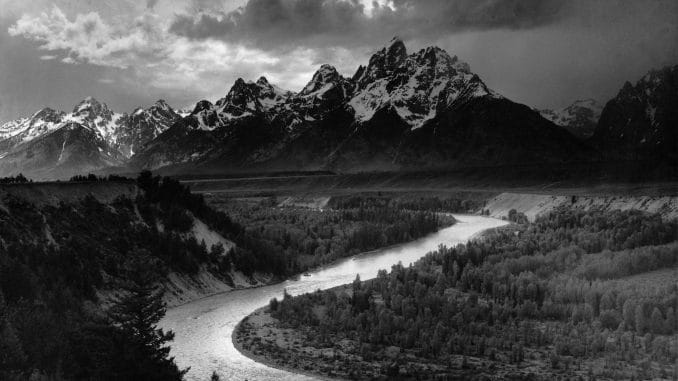
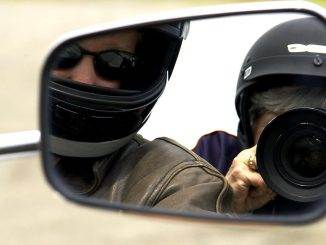
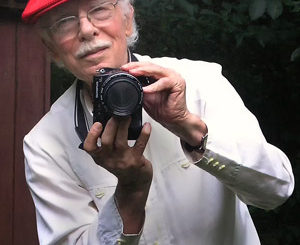
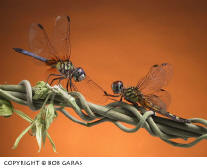
Leave a Reply